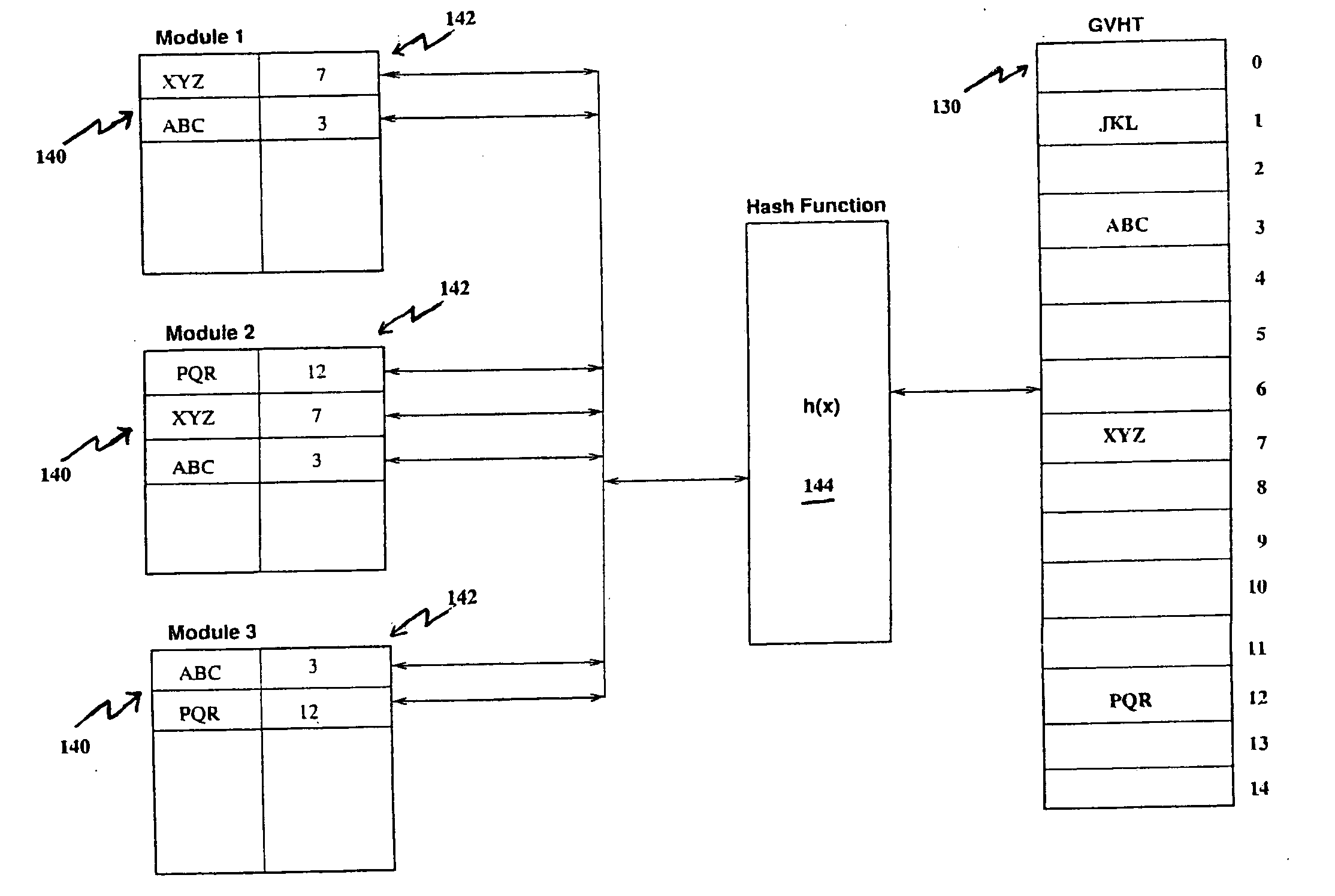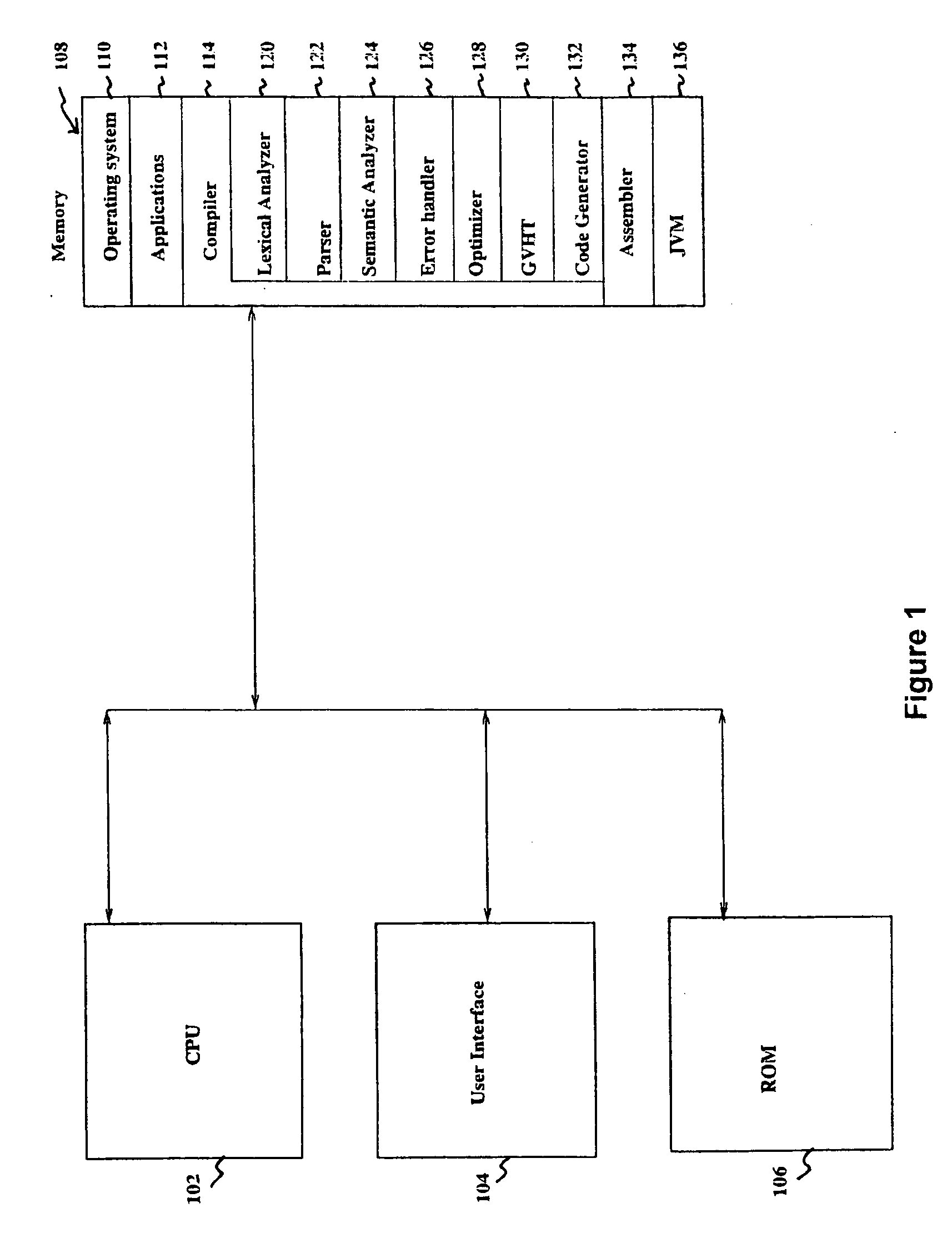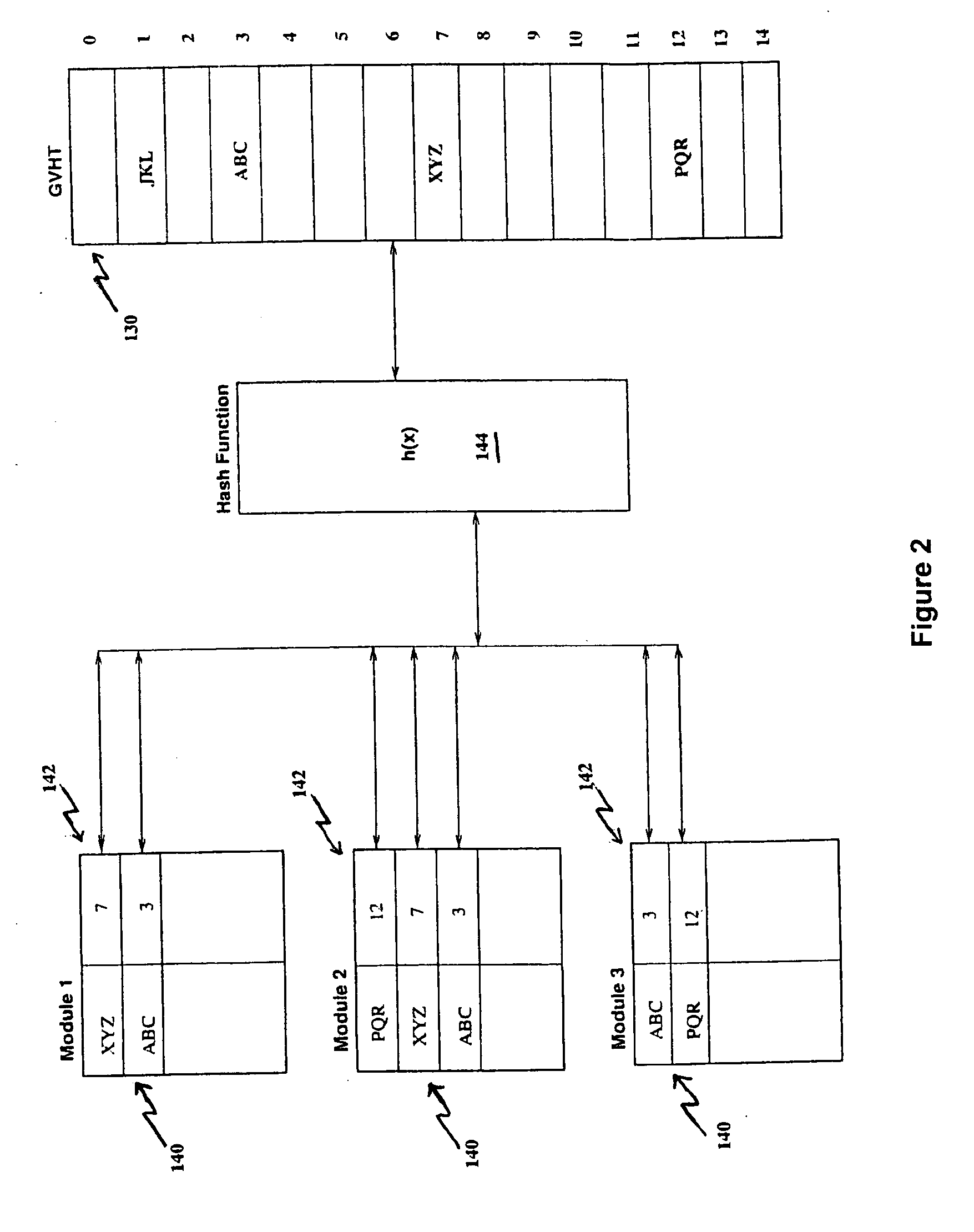Compile time linking via hashing technique
- Summary
- Abstract
- Description
- Claims
- Application Information
AI Technical Summary
Benefits of technology
Problems solved by technology
Method used
Image
Examples
Embodiment Construction
[0011] The invention will now be described in greater detail, by way of an example, with reference to the accompanying drawings, in which:
[0012]FIG. 1 shows a block diagram of a computer system including a preferred embodiment of the compiler according to the present invention;
[0013]FIG. 2 shows a hashing procedure used by the preferred embodiment;
[0014]FIG. 3 shows a block diagram of the data structures processed by the preferred embodiment of the compiler.
[0015] Referring to FIG. 1 there is shown a computer system incorporating a preferred embodiment of the present invention. The preferred computer system is an IBM PC-compatible computer running the Linux operating system. However, other platforms such as the Macintosh™, SUN SPARC™, and MIPS™ based workstations are also applicable. The computer system comprises of a central processing unit (CPU) 102, user interface 104, Read Only Memory (ROM) 106, and memory 108 including both Random Access Memory (RAM) and secondary storage, s...
PUM
 Login to View More
Login to View More Abstract
Description
Claims
Application Information
 Login to View More
Login to View More - R&D
- Intellectual Property
- Life Sciences
- Materials
- Tech Scout
- Unparalleled Data Quality
- Higher Quality Content
- 60% Fewer Hallucinations
Browse by: Latest US Patents, China's latest patents, Technical Efficacy Thesaurus, Application Domain, Technology Topic, Popular Technical Reports.
© 2025 PatSnap. All rights reserved.Legal|Privacy policy|Modern Slavery Act Transparency Statement|Sitemap|About US| Contact US: help@patsnap.com



